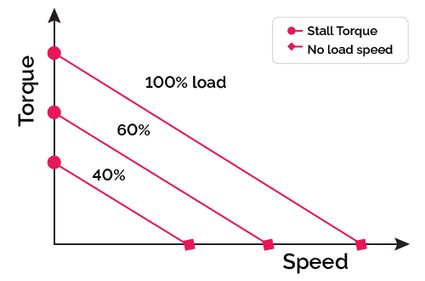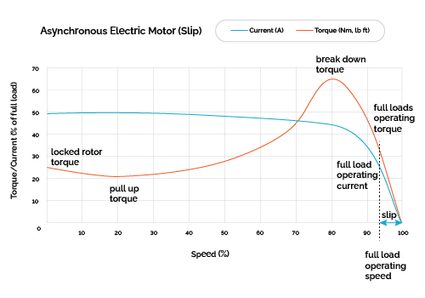

Physicist holding a 1st class degree and a member of the Institute of Physics. Creator of the UK vaccine queue calculator, and featured in many publications, including The Sun, Daily Mail, Express, and Independent. Tenacious in researching answers to questions and has an affection for coding. Hobbies include cycling, walking, and birdwatching. You can find him on Twitter @OmniSteve. See full profile

Based on 1 source
13 people find this calculator helpful
Table of contents
The amazing electric motor torque calculator indicates the relationship between motor speed, power, and torque. Are you looking to determine how much torque you can get at a specific rotational speed? Then keep reading. We will discuss how an electric motor works and indicate formulas to calculate its torque. We also define, exclusively for alternate current, what is electrical motor slip.
💡 You might also like to check out our torque calculator and the torque to hp calculator after using this calculator.
It is easy to determine whether the electric motor is working correctly, but few choose to know how they work. Keep reading; you are about to become one of the selected ones.
In case you think you have not seen an electric motor, you have one in the water pump of your house or your living room fan. Electric motors are everywhere, converting electrical energy into mechanical energy, making a shaft rotate. We have two main types of electrical motors:
If you are wondering which cable size to use for your new electrical motor, you can check our set of wire size calculators. We have a specific set of tools for DC and AC motors.
In both cases described above, the shaft rotates with a certain angular speed, producing torque. We can use such torque to rotate driven equipment like impellers in water pumps. In other words, electric motor torque is the amount of rotational force the motor develops.
In both types of electrical motors, torque depends on the intensity of the magnetic fluxes inside the motor; however, their speed and torque relation are different. In direct current, a high-torque electric motor will rotate considerably slower than at other loads. You can see this in the figure below:

That is why the phrase: "high torque low-speed electric motor" is mostly related to DC motors. On the other hand, AC electric motor experiences its maximum torque at a specific rotating speed. Engineers call such torque breakdown torque. Check it in the next picture:

In the above picture, note the "slip" text in the x-axis next to 100% speed. Slip is a value that only applies to alternate current motors. It represents the difference between synchronous velocity (the rotating speed of the magnetic field inside the motor) and the shaft speed. Our powerful electric motor torque calculator can also calculate it. Here you can see its formula:
s = r p m n o l o a d − r p m l o a d r p m n o l o a d × 100 % \small s=\rm\frac Slip is an important value since it indicates how much less speed you get running the electric motor compared to its synchronous velocity. From the graph, you can notice that maximum torque (breakdown torque) appears at a specific slip value which is data that manufacturers provide. See the catalog of a famous manufacturer of electrical motors . Independently of the current source, there is one main formula that relates shaft revolutions per minute, torque, and power: T = 60 × P / ( 2 × π × r p m ) \small T= 60 \times P/(2 \times \pi \times\rm rpm) T = 60 × P / ( 2 × π × rpm ) In AC electric motors, we have two rotation speeds: synchronous speed or magnetic field speed and real rotation speed: Synchronous revolutions per minute can be calculated as follows: rp m synch = p 120 × f The electric motor torque calculator includes a feature where, by adding the maximum slip, you can get the operating rotating speed or vice versa. In other words, if you add the motor operating speed, you obtain the slip. Such a feature helps determine whether the motor is operating at its maximum torque or not. 3.96 N·m, in case we are talking about an 1800 rpm motor or 1.98 N·m for 3600 rpm. The Omni Calculator tool electric motor torque calculator can provide the torque for different rotating speeds, or you can do as follows: 5.3 N·m. We can use Omni Calculator tool electric motor torque calculator or do as follows: Breakdown torque is the maximum torque an AC motor can reach. In electric motors, when they are starting, torque increases while the speed increases until they get to a maximum torque point. Afterward, if the motor can further increase its speed, we see how drastically the torque decreases to zero when it reaches full speed. Remember that an electric motor will never reach its synchronous velocity. For increasing electric motor torque from a design point of view, you need more poles inside the motor. Poles refer to the set of paired magnets that create the magnetic field required to rotate the shaft. The more poles you have inside an electric motor, the lower the speed, and as a consequence, the higher the torque. Engineers call this group high torque, low-speed electric motors.How to calculate the electric motor torque?
How much torque is produced by a 1 HP motor at 60Hz?
What is the torque of 1 kW, 4 pole motor?
What is breakdown torque in AC electrical motors?
How to build a high torque electrical motor torque output?